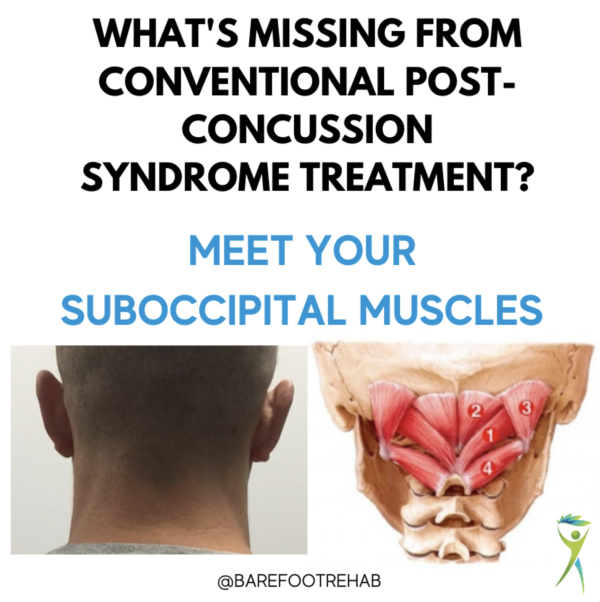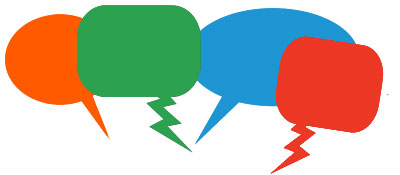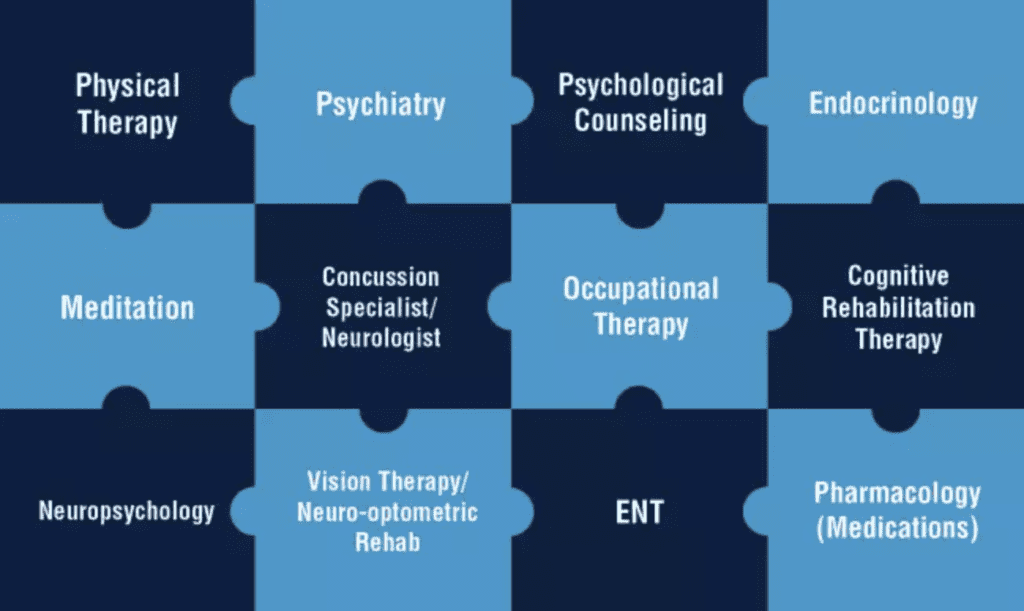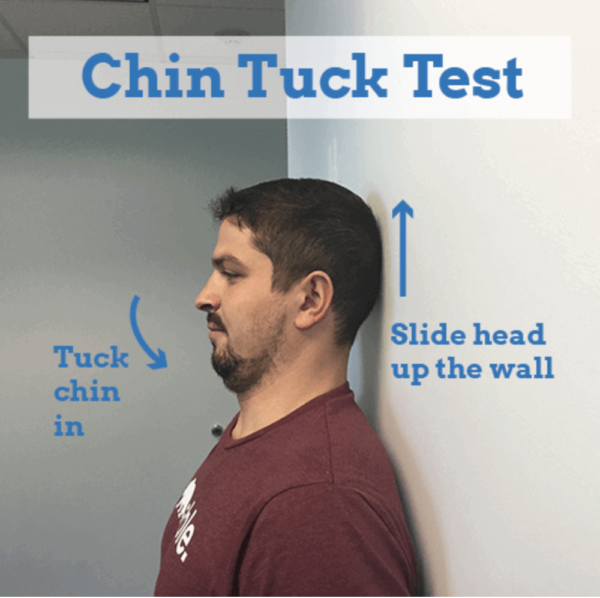
17 Jan Post Concussion Syndrome Treatment: Got Adhesion in Your Suboccipitals?
Got post-concussion syndrome (PCS) and need a treatment that actually fixes you?
Have you had these symptoms over 6 months and already tried at least 3 different doctors or therapists?
If YES, there’s a major diagnostic piece and treatment for PCS that we haven’t seen much of in the literature.
First, let’s discuss what a concussion and post-concussion syndrome is.
What is a concussion?
In short, a concussion is a trauma to the brain caused by a blow to the head when the skull moves rapidly and your brain knocks into your bone.
You’d report any of the following symptoms:
- Headache or “pressure” in head.
- Nausea or vomiting.
- Balance problems or dizziness, or double or blurry vision.
- Bothered by light or noise.
- Feeling sluggish, hazy, foggy, or groggy.
- Confusion, or concentration or memory problems.
- Just not “feeling right,” or “feeling down”.
Someone who has observed the trauma to you might see that you:
- Can’t recall events prior to or after a hit or fall.
- Appears dazed or stunned.
- Forgets an instruction, is confused about an assignment or position, or is unsure of the game, score, or opponent.
- Moves clumsily.
- Answers questions slowly.
- Loses consciousness (even briefly).
- Shows mood, behavior, or personality changes.
Having played football from 3th grade through my senior year of college and then rugby for about 10 years after that, I’ve been blessed with having several concussions.
Most people are diagnosed correctly when given the concussion diagnosis.
They’re not fun and quite scary.
My treatment of choice for my concussions? Nothing (or rest).
Thank goodness I recovered.
80-90% of youth athletes recover in 2 weeks (Source on pubmed)
The problem is when symptoms last for more than 3 months…
What is Post Concussion Syndrome?
Persistent concussion symptoms tend to occur with:
- older individuals
- having symptoms before the concussion
- loss of consciousness from the trauma
To get diagnosed with post concussion syndrome, you need to have THREE of the following symptoms 3-6 months AFTER the initial concussion injury:
- headaches
- dizziness
- fatigue
- irritability
- sleep problems
- concentration problems
- memory problems
- stress/emotional/alcohol problems tolerating.
Typical treatment for post concussion syndrome includes any of the following according to the Concussion Foundation:
Notice, there is physical therapy.
Physical therapy is the broad category that the treatment we propose would fit in.
But it’s hard to match generalized physical therapy against the diagnostic components of post concussion syndrome.
It’s a very specific muscle tissue & pathology that needs to be addressed?
What’s a physical therapist to work on?
And can a normal physical therapists fix it?
What’s missing from the conventional Post Concussion Syndrome diagnosis?
It’s nearly impossible to have head trauma without having neck trauma as well.
The neck and skull are so close that you can’t mess one area up without messing up the other, especially for concussions.
Neck symptoms aren’t even listed under diagnostic terms for concussion or post-concussion syndrome!
In people who have PCS and an actual tissue problem, the symptoms are caused by:
- MTBI – mild traumatic brain injury
- MTCI – mild traumatic cervical (neck) injury
In other words, the neck tissues got rocked because the brain did.
We’ve found that patients who do well with chronic post concussion syndrome treatment have a moderate balance of both problems:
- i.e. 60% brain and 40% neck
- i.e. 50% brain and 50% neck
It’s rarely 80% brain and 20% neck.
This makes fixing the neck a priority when it comes to fully resolving PCS.
And there’s very little research being done on the neck’s involvement with PCS (it’s almost all the brain), which is why we’re taking the time to write this posts.
The specific region of the neck you need to know about is 2 little muscles known as suboccipitals and the pathology they get after trauma.
What is suboccipital adhesion?
The suboccipitals (“sub” means ‘under’ and “occiput” means ‘skull) are muscles just underneath the skull.
Two primary muscles need to be examined to clear out PCS.
- rectus capitis posterior minor
- rectus capitis posterior major
Both muscles have connections to the C1 and C2 tubercles, connecting to the atlanto occipital membrane, and ultimately, the dura mater (part of the spinal cord).
In short, these muscles directly attach to the spinal cord and can affect changes in:
- sleep
- vision
- mood
You’ll also have:
- decreased blood flow in the spinal cord
- altered neuronal firing patterns
They also directly contribute to:
- tightness of the skull on C1 (atlas)
- chronic headaches
- dizziness
These muscles become a problem when they have adhesion form from the force of the concussive blow.
Adhesion is a glue-like substance made out of fascia to splint damaged muscles. The problem is, when it is laid down, it restricts muscle flexibility and strength.
You can test to see if you might have adhesion by doing our upper cervical flexion test, aka the chin tuck test (check out the post to see how to do it)
It’s the first flexibility test we do for all of our chronic neck pain patients.
You won’t able able to measure the range of motion, but if you have any symptoms when you slide the back of your head up a wall, that’s a really good sign you probably have adhesion in your suboccipitals!
How to fix suboccipital adhesion
To fix adhesion in your suboccipital muscles, you need to find someone who knows how to remove it by:
- Testing your chin tuck test before & after the treatment
- Can apply tension or use shockwave to those muscles
People all over the world ask us:
How do I find someone who knows how to remove adhesion?
It’s really hard to find a good provider.
Ask them if they measure your ranges of motion.
Or if they don’t measure, you check your flexibility and symptoms every day for 1-3 treatments.
Someone who knows what they are doing will make permanent changes in 1-3 treatments.
Here’s how New Jersey’s ONLY certified adhesion release provider gets rid of adhesion to help Tyler, who had post-concussion syndrome.
Have you had post-concussion syndrome for over 6 months and already seen at least 3 doctors or therapists without getting your neck checked?
Email us at Barefoot Rehab to schedule a free 30 min call with one of our patient advocates to see if you’re a candidate for permanent relief!
 How long have you had symptoms from your concussion (s)? Feel free to share in the comments below.
How long have you had symptoms from your concussion (s)? Feel free to share in the comments below.



Anat Sneh
Posted at 10:57h, 06 DecemberThank you for post- it illuminates indeed an important part of full PCS recovery. You said people ask you How do I find someone who knows how to remove adhesion. I want to point your attention to treatment with Frequency Specific Microcurrent (FSM). It can remove adhesions, even chronic long-standing ones, from all tissue types, including the dura, which is the problem here. Many people were treated for concussion and PCS with FSM with great success. You can find more information at Dr. McMakin’s FSM website- frequencyspecific.com.
Dr. Chris
Posted at 14:21h, 15 DecemberTY Anat! I’ll look into .
Gurban Mammadli
Posted at 02:42h, 21 MayDoktorla online görüşmek mümkün mü? Azerbaycan da yaşıyorum profesyonel basketbolcuyum beyin sarsıntısı geçirdim ve hala rahatsız edici şeyler var.
Dr. Chris
Posted at 18:21h, 22 May: )